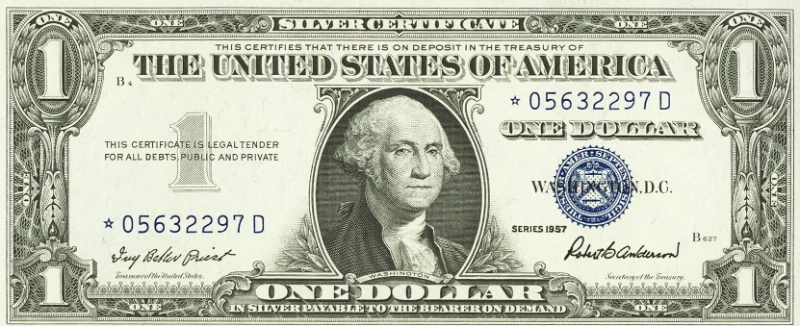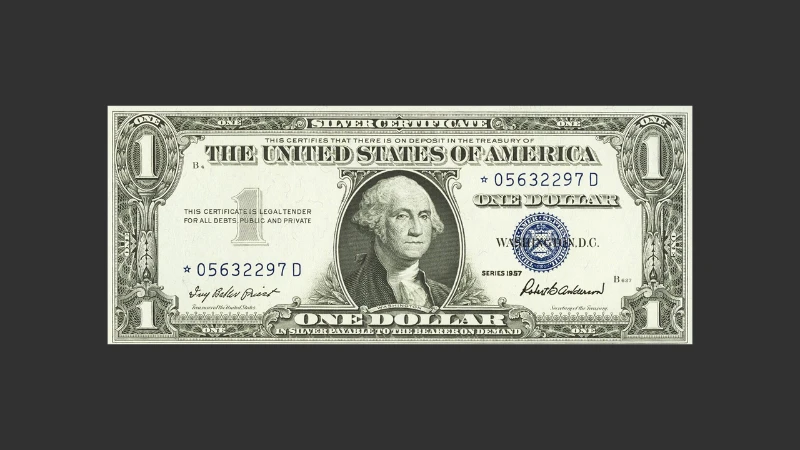A 1957 silver certificate dollar bill is a type of paper money that was issued by the United States government. These bills look similar to regular dollar bills but have special features that make them unique. They were printed during a time when paper money could be exchanged for actual silver, which is why they are called silver certificates.
How to Identify a 1957 Silver Certificate
- Silver Certificate Label: At the top of the bill, instead of "Federal Reserve Note," it says "Silver Certificate."
- Blue Seal: The seal on the right side of the bill is blue, not green like modern bills.
- Date: The bottom of the bill will say "Series 1957," "1957A," or "1957B."
- George Washington Portrait: The front of the bill has a picture of George Washington, just like a regular $1 bill.
Why 1957? The 1957 series was one of the last groups of silver certificates ever printed. After 1964, the U.S. stopped backing its paper money with silver, so these certificates became a part of history.

Can You Exchange a Silver Certificate for Silver?
When silver certificates were first issued, you could take one to the bank and exchange it for silver coins or bars. However, this practice ended in 1968. Today, a 1957 silver certificate cannot be exchanged for silver, but it still has value as a collectible.
What is the Value of a 1957 Silver Certificate?
The value of a 1957 silver certificate depends on its condition and rarity. Here are some general guidelines:
- Circulated Bills: These are bills that were used in everyday transactions. They are usually worth $1.25 to $2.
- Uncirculated Bills: These bills are in mint condition, with no folds or stains. They can be worth $3 to $5.
Special Cases
- Star Notes: Some 1957 silver certificates have a small star next to the serial number. These are more rare and can be worth $10 or more.
- Unique Serial Numbers: Bills with repeating numbers or sequences like "12345678" can fetch higher prices from collectors.
Why Do People Collect Silver Certificates?
Silver certificates are fascinating pieces of history. They remind us of a time when money was directly tied to precious metals. Collectors enjoy studying their designs, learning about their origins, and sometimes even investing in them. Owning a silver certificate can feel like holding a piece of America’s financial past.
How to Protect and Store Your Silver Certificates
If you own a 1957 silver certificate, you should take steps to preserve it:
- Use a Protective Sleeve: Place the bill in a clear, acid-free sleeve to prevent damage.
- Avoid Folding: Keep the bill flat to maintain its value.
- Store in a Cool, Dry Place: Humidity and heat can damage paper money.
Should You Buy a 1957 Silver Certificate?
If you’re interested in history, collecting, or investing, a 1957 silver certificate is a great choice. They are affordable, widely available, and offer a glimpse into the past. Just be sure to research sellers and avoid paying too much for a bill that is not rare.
Conclusion
The 1957 silver certificate dollar bill is more than just old paper money. It represents a time when the U.S. monetary system was closely tied to precious metals. If you ever come across one, take a moment to appreciate its unique story and the role it played in America’s financial history.
